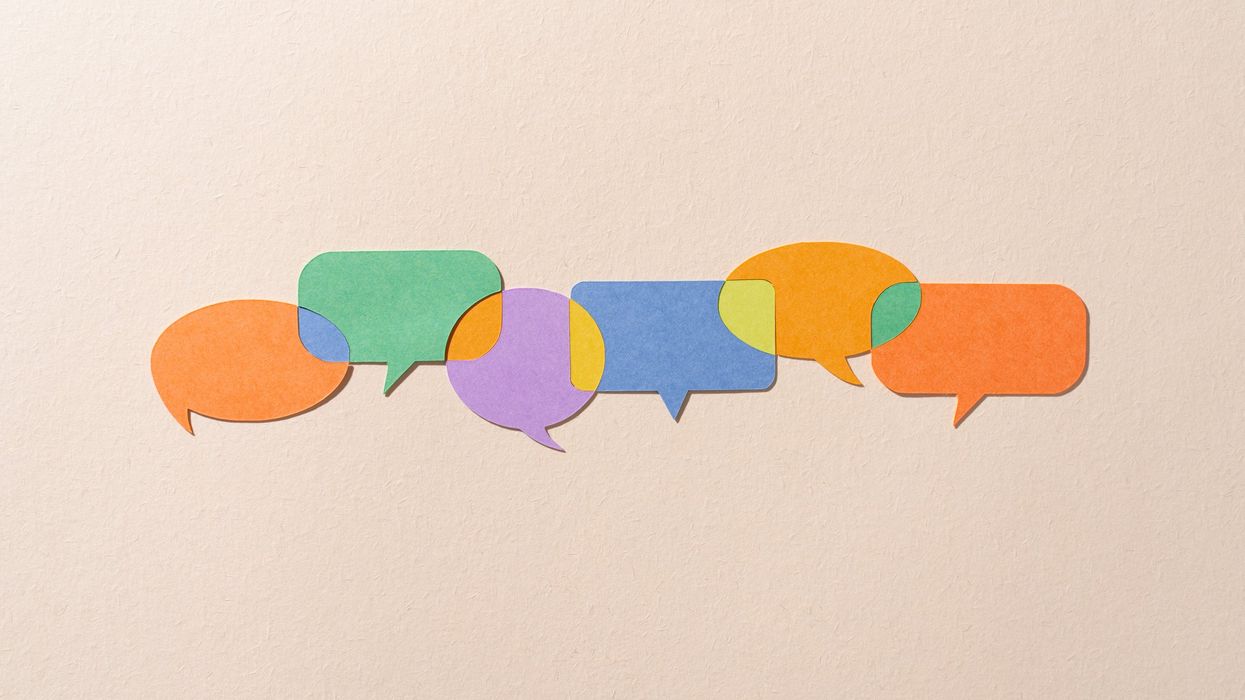Tomorrow is the first day of the inaugural in-person Bridging Movement Summit. Special thanks to ListenFirst Project for organizing this summit, an exciting opportunity for roughly 150 members of the “bridging” field to learn, build relationships, collaborate…and hopefully, internally disagree (respectfully, of course).
In the aftermath of Charlie Kirk’s assassination, there is an understandable desire to have unified messaging from the field. While I completely support unified messaging condemning political violence, I think it is largely unhelpful for the field to reflexively double down on whatever it is already doing.
Bridgers should be comfortable bridging about bridging!
Let’s be strategic and thoughtful about the best approaches, which should involve grappling with ideas, along with a willingness to challenge each other’s methods. It is vital to engage with each other about what steps the field should take to achieve impact at scale. I define bridging as actions that change how Americans think and feel about—and act toward—those in other groups. I mostly focus on the political spectrum.
The field prides itself on the value of disagreement in terms of political topics, with calls for mindsets like “curious disagreement.” Yet I have found internal discussions about the best paths forward to be muted and sometimes barely existent.
Means of better disagreeing with each other are relatively straightforward. They involve a willingness to express strategic and tactical differences in both verbal and written communication, at the Summit and beyond. This publication, The Fulcrum, is an excellent forum for public discussion, and some can be done in private. Sometimes, the largest challenge is having the courage to disagree with one’s own field.
I focus the rest of this article on some strategic and tactical points I think are important. There is no way everyone in the field completely agrees with these points, so they can be starting points for respectful disagreement and developing better solutions. They are as follows:
- Aim for a massive scale, likely impacting >100 million Americans.
- To achieve this scale, impact the information environment, and sometimes de-emphasize interpersonal programming.
- Messaging and stories for the information environment should correct distortions, motivate interpersonal and outward-facing / “evangelizing” actions, and prove why this matters.
I also advocate for using a term like “trust-building” rather than bridging to describe the field, which should generate some controversy and disagreement.
By honestly evaluating and critiquing ideas, the field can progress. I support the field’s emphasis on “intellectual humility,” and one person cannot claim to have all the answers. I also like to think of continuums or spectrums, rather than binaries, so agreement can mix with disagreement.
Idea 1: Aim for massive scale, likely impacting >100 million Americans
When it comes to the U.S., numbers are huge. America has >340 million residents, and >150 million voted in 2024.
I co-authored an article earlier this year, arguing that a large share of these must be impacted, at least 85 million and likely >100 million Americans.
Measures of coldness toward the other political party (sometimes described as “affective polarization” or “partisan animosity”) show widespread emotional change among the public. Majorities of Americans in 2022 said those in the other party were more closed-minded, dishonest, immoral, and unintelligent than those in their party.
Aside from targeting influential leaders who could eventually impact >100 million Americans, it is hard to argue that impacting a smaller group is sufficient. The field should not be in the business of trying to change the attitudes of a fairly small number of Americans in order to elect a specific party to power. The “3.5% rule” also does not really apply, as that refers to the share of the population that needs to be in the streets to achieve a “maximalist” demand like “overthrowing a government or achieving territorial independence,” which are not directly relevant for the field’s purposes.
Idea 2: To achieve this scale, impact the information environment, and sometimes de-emphasize interpersonal programming
To date, the field has largely focused on interpersonal methods of change to bring people together across the political spectrum, such as with dialogues and joint activities. Common methods include workshops or doing an activity together in a community.
I think such actions have fairly strong intellectual and empirical support, largely based on the contact hypothesis / contact theory, and the benefits of collaborating on superordinate goals.
However, my concerns are much more about impacting anywhere near the 100 million Americans described in the previous section. To reach that many Americans a single time, it would take more than 270 years, at a rate of 1,000 Americans daily (roughly, a daily event in each state).
To address this many Americans, it is necessary to impact the information environment. The information environment is all the content that Americans can consume, both from interpersonal interactions and from various media sources. It can impact motivation to engage in dialogue and interpersonal action outside of formal activities, and directly impact how Americans think and feel about each other.
Starting interpersonally, the information environment can be utilized to give repeatable and short “stop, drop, and roll” ideas for having conversations across politics that do not require attending a workshop. At my organization, More Like US, our Let’s Be SVL initiative uses the information environment to give simple guidance to college students about how to have conversations (share Stories, relate to their Values, and Listen).
Additionally, since many friends are somewhat politically similar, it also greatly matters what Americans say to politically similar friends about those whose views may be different. The field can help facilitate better versions of these conversations. An approach could be a mass communication / bite-sized version of the Braver Angels Depolarizing Within workshop that aims for “intervening constructively in social conversations with like-minded peers.”
Going beyond solely interpersonal options, a variant of the contact hypothesis theory called “indirect contact” shows that interpersonal interaction is not absolutely necessary to positively impact how Americans think and feel about those in another group, like those across the political spectrum. The term is “indirect” because individuals watch others interact or develop one-sided relationships with characters. While this can inspire interaction, it can also have positive impacts in the absence of additional interpersonal interaction.
An example of indirect contact is the documentary from Braver Angels based on its Red-Blue workshop. Bridge Entertainment Labs and Resetting the Table, via its programs such as Hollywood Impact Fellows, generally aim to inspire Hollywood to make this kind of TV and film. Our guidance for creatives at More Like US provides insight about how to make this content.
Taking a step back, a final area for improving the information environment involves reversing perverse incentives in various sectors that lead to demonized and overly negative stories and messages about each other. A longstanding adjacent field that focuses on structural reforms to America’s system of government does some of this work, and there needs to be more work on improving incentives in news media, social media, and even the non-profit sector itself.
Idea 3: Messaging and stories for the information environment should correct distortions, motivate interpersonal and outward-facing / “evangelizing” actions, and prove why this matters
Utilizing the information environment requires strategic thinking about the messages and stories that should be conveyed.
I focus on four main categories: correcting overly negative distortions of each other, motivating interpersonal dialogue and actions, motivating outward-facing / “evangelizing” grassroots actions, and explaining why this work matters.
- Correcting overly negative distortions of each other across the political spectrum: Substantial work shows that Americans have various perception gaps of each other as more ideologically extreme, interpersonally hostile, threatening (see here, here, and here), and inferior and stereotypical than in reality. All of these distortions increase intergroup anxiety and discourage conversations and collaboration.
- Motivating interpersonal dialogue and actions across the political spectrum: Motivation is multifaceted, including increasing desire to engage and lowering barriers that discourage interaction. These include promoting values such as curiosity, repeating easy-to-remember conversation skills, correcting misperceptions of social norms, communicating positive outcomes of interactions, and, as mentioned above, correcting overly negative distortions of each other.
- Motivating outward-facing / “evangelizing” grassroots actions: Many organizations, such as Braver Angels and BridgeUSA, have developed impressive “ground games” with roughly 100 alliances / chapters each. These grassroots groups can be activated to be much more outward-facing / “evangelizing,” spreading key messages like those above. With a co-author, I wrote about spreading messages in “three N’s”: in one’s Neighborhoods, Networks, and—for a few with large reach—our Nation. As mentioned above, since many friends are somewhat politically similar, it matters greatly what we say about those whose views may be different.
- Explaining why this work matters: I think some people view the field as almost cute, focusing on small-group conversations with limited impact. Yet if the field can impact anywhere near 100 million Americans, the benefits to society can be huge. This field can reduce discrimination. This field can reduce the desire for authoritarianism and likely censorship, since psychology shows an activation of tendencies to want them when people feel that their safety and security is threatened. This field can help change voting patterns based on negative partisanship, when Americans realize that their fellow Americans who may vote differently are not as bad as they believed. This field can reduce the impact of mis- and disinformation, since confirmation bias shows that people tend to accept information that aligns with their views, including views of each other that are often overly negatively distorted. And finally, in the aftermath of assassinations this year, this field can reduce support for political violence, as seen with results from the Strengthening Democracy Challenge.
Bonus contentious idea: Replace the term bridging with something like “trust-building”
I do not think the wording of “bridging” is particularly helpful.
- I believe it overemphasizes difference, suggesting a wide divide that must be overcome. Yet there are actually many unexpected overlaps, as described with perception gaps above.
- Unless the bridge spans multiple “islands,” I see it suggesting two main parties. However, there are Americans all along and across multiple political spectrums.
- It is difficult to connect this to relationships between the public and institutions, unless one uses odd terms like “vertical bridges.”
- I think it invites criticism that the field advocates “kumbaya” approaches, with ideas like any issue can be mended.
- I find the language to be more attractive to political liberals than conservatives. For a more objective measure, the “How to Talk Bridge-y” research from Philanthropy for Active Civic Engagement describes the term as sending signals as weak liberal and strong urban (often correlated with political liberalism).
I instead advocate for some word or phrase based on trust, such as “trust-building.” The wording of trust has credibility in the field, including the TRUST Network and Aspen Institute’s Alliance for Social Trust, which argues that “social trust is foundational to a healthy society.” Unlike the problems of the term bridging, trust does not imply difference; it seems politically neutral, and it allows for the presence of multiple groups and the building of vertical trust in leaders and institutions.
Sometimes, actually achieving trust itself may not be possible, but moving in the direction of trust is valuable. One prominent “wheel of emotions” shows that trust is near the top of a continuum from loathing to admiration, and moving far away from loathing is highly desirable for society. Therefore, while the actual word(s) to use may be something like “toward trust,” “trust-pathing” (on the path toward trust), or “trust-strengthening,” I believe most options with trust will be better than using the term bridging.
Finally, the “How to Talk Bridge-y” research mentioned above found that fewer Americans had any attitude toward the word bridging among 21 words tested, so it would not cause too much of a public stir if the term bridging is replaced.
Conclusion
I believe that the bridging field should think big—huge—gigantic—and try to reach and impact at least 100 million Americans.
It may seem impossible, but other movements have achieved nearly complete attitude change among the public. In 1958, 4% of Americans supported interracial marriage, and the rate is now over 90%. Even accounting for generational replacement, societal norms have completely reversed.
Everyone in the bridging field will not—and should not—agree with me on everything. This should be a starting point for discussion and often disagreement on various topics.
Telling ourselves that “every bit helps” and fully supporting each other’s efforts, no matter what, may sound comforting, but it is ultimately quite unhelpful. While being respectful of one another, it is vital to grapple with how various approaches can achieve widespread impact. The Bridging Movement Summit is a great starting point for these internal conversations.
James Coan is the co-founder and executive director of More Like US. Coan can be contacted at James@morelikeus.org




















